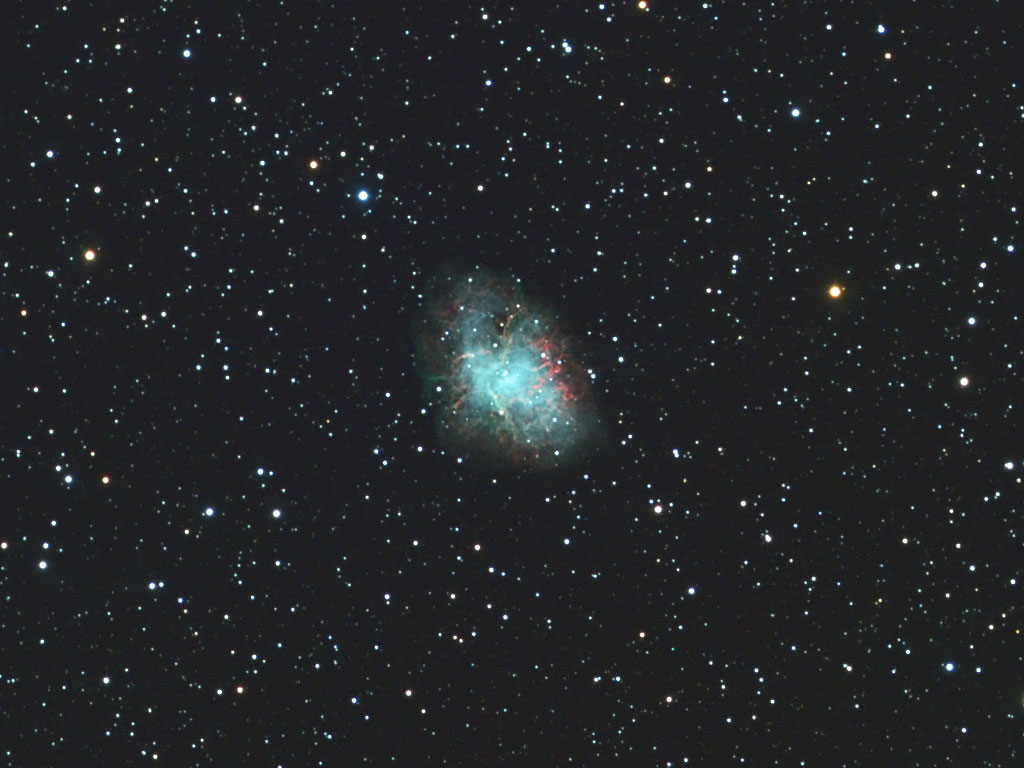Telescope: Astro-Physics 130 Grand Turismo @ F6.3 (819mm) w/Field Flattener |
Wikipedia Notes:
The Crab Nebula (catalogue designations M1, NGC 1952, Taurus A) is a supernova remnant and pulsar wind nebula in the constellation of Taurus. The nebula was observed by John Bevis in 1731; it corresponds to a bright supernova recorded by Chinese and Arab astronomers in 1054. At X-ray and gamma-ray energies above 30 KeV, the Crab is generally the strongestpersistent source in the sky, with measured flux extending to above 1012 eV. Located at a distance of about 6,500 light-years (2 kpc) from Earth, the nebula has a diameter of 11 ly (3.4 pc) and expands at a rate of about 1,500 kilometers per second.
At the center of the nebula lies the Crab Pulsar, a neutron star (or spinning ball of neutrons), twelve miles across,[5] which emits pulses of radiation from gamma rays to radio waves with a spin rate of 30.2 times per second. The nebula was the first astronomical object identified with a historical supernova explosion.
The nebula acts as a source of radiation for studying celestial bodies that occult it. In the 1950s and 1960s, the Sun's corona was mapped from observations of the Crab's radio waves passing through it, and in 2003, the thickness of the atmosphere of
Saturn's moon Titan was measured as it blocked out X-rays from the nebula.
The cloudy remnants of SN 1054 are now known as the Crab Nebula. The nebula is also referred to as Messier 1 or M1, being the first Messier Object catalogued in 1758.
|

